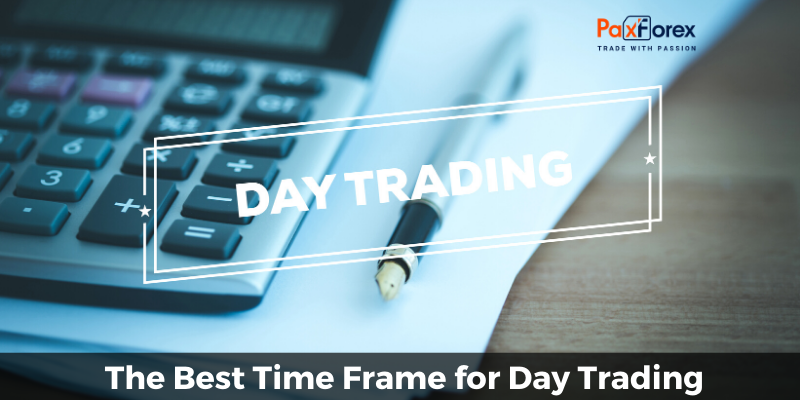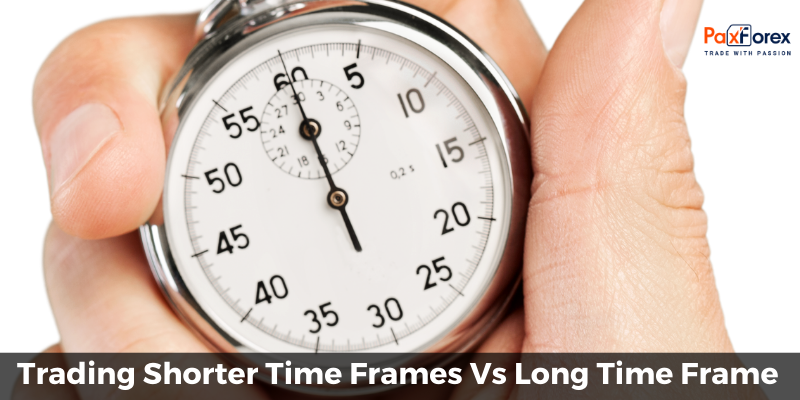
What is the best time frame chart for day trading? The answer depends on your strategy, your expectations, as well as the unique conditions of each session. Let’s sum up all the factors to consider when choosing which time frame do you want.
How Traders Choose a Time Frame
Before you start questioning what timeframe should I use to analyze a chart, it would make sense to start by defying time frames in general. A time frame is an expression of prices over a specific period, from one minute to one month. Based on the frame you select, each element of the chart will reflect the asset’s price different at different moment values. For example, on the monthly candlestick chart, one candle summarizes a day, while on the daily chart it stands for one hour.
Many new traders get confused with the variety of time frames. However, the explanation behind so many choices is quite simple: the time frame setting goes hand in hand with every trader’s strategy and style. This way, a scalper will rarely go higher than a four-hour chart, and the position trader will never go to anything less than one hour.
Since today we are looking for the best chart time frame for day trading, let’s focus on the specifics of this particular approach. So, what time frame is best for day trading?
Which Chart is Best for Day Trading
Day traders aim to limit all their trades to the course of one trading day. The main reason to close your positions before the day is out is to avoid the night interest fees, known as swaps. On top of that, day trading is usually dynamic enough to gather visible profits without overstressing.
Intuitively, you might think that the 1D frame is the best candle time frame for day trading. However, in order for you to be able to fit several trades within that one day, you will need to scale down to a much lower level. But which fame?
Ultimately, your exact choice of Forex day trading time frames depends on your trading personality. Some traders like to run fast and seize every possible opportunity, others spend hours analyzing and looking for perfect trading set up. Neither of them is wrong, but before you catch up with your unique style, it might be best to stay in the middle.
One of the good solutions to balancing between different time settings is timeframes combinations trading. But before we go into the technicalities of combining time frames, let’s first establish the main differences between trading shorter time frames vs long time frame.
Trading Shorter Time Frames Vs Long Time Frame

The chart is your map of the market, which helps you find suitable trading opportunities. Now, the trading opportunities vary from one trader to another, depending on their style. A day trader has to focus on minor price swings and set their automated order limits relatively close to the movement. To do this effectively, you should get the grasp of trading shorter time frames vs long time frame.
Short time frames are ideal for evaluating the precise fluctuations over narrow periods. As you might imagine, such charts are highly dynamic, with new elements forming rather quickly. A possible downside of the short term frames is the escalated amount of ‘noise’, insignificant price changes, which can often serve as false trading signals. To filter those out, traders can implement a dual time frame trading strategy.
The long term frames, on the other hand, are all about the big picture. By using the high frames, traders are able to build a more forward-looking action plan and open long-lasting positions. One of the challenges when trading on a long-term frame is finding the most optimal entry and exit points, which can be once again be solved with multiple time frame trading.
How to Trade Multiple Timeframes
Multiple time frame trading is a very popular market analysis approach, where traders cross-check between charts to confirm their forecasts and choose the most suitable entry and exit points. There are many solutions to how to trade multiple timeframes, but the execution is pretty much the same: using multiple screens or switching between frames in your MT4.
It’s important to keep in mind that while the multiple time frame approach is great for analysis, there is still going to be only one action time frame. You can learn more about this when you explore how to perform multiple chart time frame analysis.
Which Chart is Best for Trading
Some traders swear by 1-minute charts, others strongly advise against trading anywhere less than 1-hour. Which chart is the best for trading? The one that works for you. As long as the chart you chose continues to present you with a sufficient amount of trading opportunities and doesn’t cause you too much stress — it’s perfect. Just remember to always keep your eyes open for new ideas and insights to stay on top of the trading at all times.







